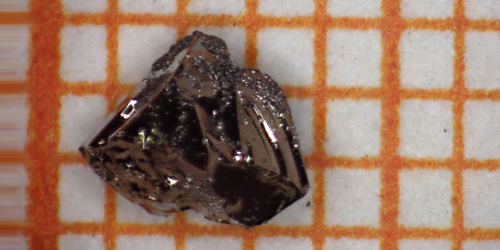Unconventional Spin States in YPtBi
Existing quantum computers are prone to errors because they store information in quantum-state superpositions that are easily destroyed. Researchers are developing an alternative technology that stores quantum information more robustly as Majorana fermions—quasiparticles that can be hosted by a class of materials known as topological superconductors. In a new experiment, Rui Zhou of the Institute of Physics of the Chinese Academy of Sciences and colleagues have studied the superconducting properties of a topological-superconductor candidate, yttrium platinum bismuth (YPtBi) [1].
Several key properties of YPtBi—including strong spin–orbit coupling and a lack of inversion symmetry—allow the material to sustain topologically nontrivial states. But whether such states include topological superconductivity depends on how the material’s electrons combine to form so-called Cooper pairs, the quasiparticles that carry supercurrents. Determining the type of pairing behind superconductivity in YPtBi has been challenging because of the material’s low charge-carrier density and its low superconducting critical temperature.
Zhou and colleagues studied YPtBi across temperatures approaching absolute zero using nuclear magnetic resonance (NMR) spectroscopy. They placed a sample in a magnetic field to align the nuclear spins of a specific isotope, Pt-195. Then, by measuring how these nuclei returned to alignment after being perturbed by a radio-frequency pulse, they gleaned information about the nuclei’s electronic environment. The dependence of the relaxation rate and NMR spectra on the sample’s temperature suggested that, in superconducting YPtBi, Cooper pairs have more varied spin states than just the spin-up and spin-down electron pairs of conventional superconductors.
Such unconventional pairing bolsters the hypothesis that YPtBi is a topological superconductor. The results will also inform models of the pairing mechanism in topological superconductors, improving these materials’ prospects in topological quantum computing.
–Sophia Chen
Sophia Chen is a freelance science writer based in Columbus, Ohio.
References
- Y. Z. Zhou et al., “Antiferromagnetic spin fluctuations and unconventional superconductivity in topological superconductor candidate YPtBi revealed by 195Pt-NMR,” Phys. Rev. Lett. 130, 266002 (2023).




